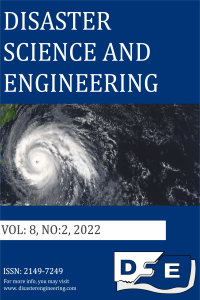Abstract
References
- Nura Jafar Shanono, Department of Agricultural and Environmental Engineering, Bayero University Kano, Nigeria
Modelling the Effect of Drought on Soil-moisture Availability Deficit for Sandy-loam Soils in Semi-arid Kano, Nigeria
Abstract
Soil-moisture availability (SMA) is unquestionably important in crop production. Despite the acknowledgement of this, such conditions of SMA cannot easily be maintained during rainfed farming, especially in arid and semi-arid regions characterized by erratic rainfall. However, studying the historic trend of SMA in rainfed farming for the predominantly sandy-loam soils of semi-arid Kano could explore the dynamics of SMA and its effect on Maize crop production. To achieve this, a model for estimating SMA-deficit was developed, applied and reported herein. The model couples the SMA balance model, storm duration computation, cumulative infiltration (Horton’s equation), crop evapotranspiration (ETo, kc and ETc) and the algorithm for the computation of SMA-deficit. The model was able to predict periods when SMA-deficit is expected to be high or low whenever it takes a couple of days with or without rainfall events. The area below the SMA-deficit curve gives the amount of water that the rainfall failed to provide to make the water in the soil available to the crop due to dry spells. This deficit needs to be replaced using either supplemental irrigation or by means of in situ rainwater harvesting techniques otherwise, the crop will reach the permanent wilting point. However, the amount of water to be supplemented should depend also on the type of crop grown, the crop’s growth stage, and soil and climate characteristics. The model was able to predict the fact that Maize planting may be delayed till around the third week of June to prevent the risk of a long dry spell as Maize has little tolerance to water stress conditions.
References
- Nura Jafar Shanono, Department of Agricultural and Environmental Engineering, Bayero University Kano, Nigeria
Details
| Primary Language | English |
|---|---|
| Subjects | Engineering |
| Journal Section | Articles |
| Authors | |
| Publication Date | December 31, 2022 |
| Published in Issue | Year 2022 Volume: 8 Issue: 2 |

